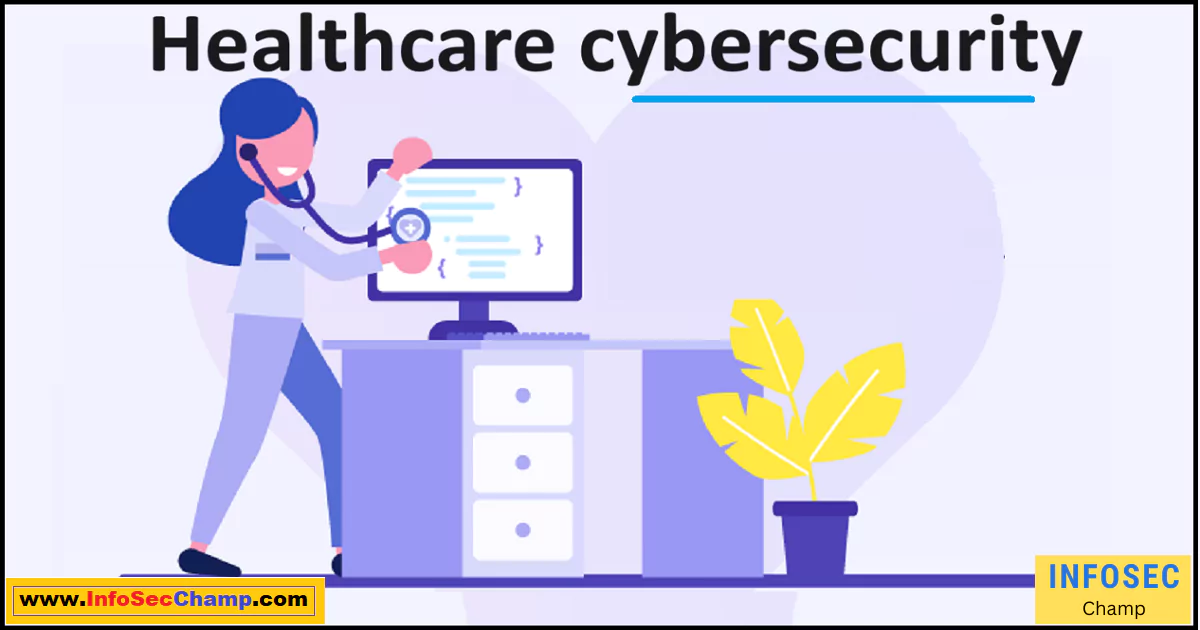Healthcare cybersecurity is crucial like never before, as medical facilities face siege from sophisticated cybercriminals. The healthcare industry is under mounting risk of disruptive attacks including ransomware, data breaches, and weaponization of vulnerable IoT devices.
Improving healthcare organization data security requires a multilayered approach. IT teams must identify and close security gaps spanning legacy systems, cloud environments, remote access pathways, and medical IoT devices. Proactive threat hunting and cyber resilience planning are also essential.
Adopting advanced threat prevention and consolidation solutions can significantly bolster defenses. Centralized visibility, automated policy coordination, and real-time threat intelligence enable faster response to mitigate damages. Prioritizing cybersecurity and promoting a culture of cyber awareness organization-wide is key.
Why is healthcare cybersecurity important?
| Reason | Explanation |
|---|---|
| Protect patient data | Healthcare organizations store sensitive patient information like medical records, diagnoses, prescriptions, and financial/insurance details. Breaches expose patients to identity theft, insurance fraud, or blackmail. |
| Ensure continuity of care | Attacks like ransomware and DDoS can impair access to patient records, treatment machinery, and more, disrupting the delivery of potentially life-saving care. |
| Avoid regulatory penalties | Healthcare entities must comply with regulations like HIPAA that mandate strict security standards for patient data. Violations incur heavy fines. |
| Save costs | Breaches cost healthcare entities $10 million on average. Effective cybersecurity reduces damages and recovery costs after incidents. |
| Build patient trust | Patients expect their providers to safeguard their personal information. Data exposures erode patient confidence and damage an organization’s reputation. |
What are the biggest healthcare cybersecurity threats?
- Ransomware – Infects systems, encrypting data until a ransom is paid. Healthcare is the top target, with 1-in-42 organizations hit in Q3 2022.
- Phishing – Deceives users into handing over login creds or downloading malware. A common first step in deeper attacks.
- DDoS – Overwhelms systems via excessive traffic, disrupting access. Often used to extort ransom payments.
- Data breaches – External attackers or malicious insiders stealing patient info for fraud or sale on the dark web.
- Unsecured IoT – Exploitation of vulnerable medical devices like x-ray machines, wearables, etc. to access the healthcare network.
How can healthcare organizations improve their cybersecurity?
- Identify and patch security gaps in legacy systems, IoT devices, cloud environments, etc.
- Implement multi-layered defenses like advanced threat prevention, anti-ransomware, firewalls, etc.
- Adopt modern consolidated/integrated security platforms for centralized control and visibility.
- Promote organizational cybersecurity awareness through training on risks, policies, etc.
- Develop incident response plans and conduct response drills to improve readiness.
- Monitor systems proactively via threat hunting to detect issues early.
- Work with trusted managed security partners to augment in-house capabilities.
What is the cost of poor healthcare cybersecurity?
The impacts of successful cyberattacks on healthcare entities are multifaceted:
- Direct financial costs averaging $10+ million per breach including legal fees, IT recovery, patient notification, etc.
- Productivity losses from downtime during remediation, are estimated at hundreds of thousands per hour.
- Long-term damage to patient trust, reputation, and brand value.
- Legal and regulatory penalties for violations of patient privacy laws.
- Disruption to operations and patient care, potentially risking health outcomes.
- Diverted focus on security management rather than core medical priorities.
Thus robust cybersecurity is imperative for healthcare organizations to avoid sizable monetary and non-monetary costs.
Healthcare Cybersecurity SOS: Essential Strategies You Should Know Now
- Prioritize patching and upgrading outdated, vulnerable legacy systems
- Segment networks and enforce least privilege access controls
- Implement multi-factor authentication across all remote access pathways
- Continuously monitor systems and network activity to catch issues early
- Provide ongoing cybersecurity training and simulated phishing tests for personnel
- Develop and test incident response playbooks for key scenarios like ransomware
- Maintain current backups offline to enable quick restoration after an attack
- Invest in advanced threat prevention and detection capabilities like anti-ransomware, email security, intrusion prevention, etc.
- Adopt a consolidated security platform for centralized visibility and policy coordination
- Utilize managed security services to augment internal capabilities cost-effectively
Examining the unique cybersecurity challenges facing healthcare organizations in the modern threat landscape
| Challenge | Description |
|---|---|
| Legacy systems | Many healthcare entities still rely on outdated systems containing unpatched vulnerabilities that are easy for hackers to exploit. |
| Insecure medical IoT | IoT devices like patient monitors, infusion pumps, etc. often lack adequate security controls and can give attackers access to healthcare networks. |
| Third-party risk | Healthcare organizations share data with many external partners, expanding the attack surface. Breaches via third parties are common. |
| Talent shortages | There is a major scarcity of skilled cybersecurity personnel in the healthcare sector, leaving security teams understaffed. |
| Budget constraints | Healthcare facilities have limited security budgets as they prioritize allocating resources to direct patient care. |

Assessing the impacts of high-profile healthcare data breaches and ransomware attacks in recent years
- Major breaches like Anthem, Premera, etc. exposed over 100 million patient records combined, enabling large-scale identity theft and fraud.
- Ransomware attacks have impaired critical care delivery at hospitals, endangering patient health and safety.
- Healthcare entities have faced heavy HIPAA fines – e.g. $16 million for Anthem – due to lax security standards and privacy violations.
- Remediation costs per incident run into millions – e.g. $115 million for the Premera breach. Productivity losses from downtime add to costs.
- Stock prices of healthcare firms can drop substantially after breaches, indicating a loss of investor confidence.
- Attacks undermine patient trust in healthcare entities’ ability to safeguard their sensitive personal data.
- Breaches often lead to class action lawsuits by patients, resulting in large settlement payouts.
- Healthcare firms suffer brand/reputation damage after incidents, which can translate to loss of business and revenue.
Understanding the risks introduced by legacy systems and medical IoT devices in healthcare environments
- Legacy systems like outdated MRI machines often run outdated operating systems no longer supported by vendors with patches for new threats.
- Attackers exploit vulnerabilities in legacy systems to gain a foothold in healthcare networks and access connected systems.
- Many medical IoT devices lack built-in security capabilities, making them an easy target. Most have hard-coded passwords that never get changed.
- Connecting insecure IoT devices to healthcare networks introduces new weak points that attackers can exploit to access sensitive data.
- Hackers can pivot from compromised IoT devices to wider network access. They can also weaponize IoT devices, impacting patient health.
- Legacy systems and IoT devices make healthcare networks harder to secure and segment. They expand the attack surface and often can’t handle advanced security controls.
How to improve healthcare organization data security
- Implement robust identity and access management controls like multi-factor authentication and least privilege permissions.
- Install advanced threat prevention and anti-malware protections across endpoints, networks, and cloud environments.
- Adopt a zero-trust framework to tighten access controls and limit lateral movement after breaches.
- Deploy data loss prevention and rights management capabilities to better control sensitive data usage.
- Enable strong encryption for data at rest and in transit to make stolen data unusable.
- Establish comprehensive data classification schemes and policies.
- Develop sound data backup, retention, and disposal practices.
- Integrate security tools into centralized platforms for consolidated visibility and control.
- Promote strong cyber hygiene among personnel via training on data handling, phishing risks, etc.
- Institute data-centric audit and compliance controls to ensure adherence to security best practices.
Conclusion:
Robust cybersecurity is now an indispensable strategic priority for healthcare organizations. As cyber threats grow exponentially, healthcare entities must urgently reinforce their defenses to protect patient safety and data privacy. While budgetary constraints and talent gaps present challenges, healthcare providers can optimize limited resources by consolidating security stacks and embracing managed services.
Incrementally maturing cyber programs by closing security gaps, strengthening access controls, adopting modern integrated security platforms, and developing incident response capabilities can significantly bolster resilience. Proactive threat hunting and cyber hygiene promotion also play key roles. With persistence and pragmatism, healthcare’s cybersecurity foundations can be progressively fortified.

FAQs:
Q: Why is the healthcare industry an attractive target for hackers?
A: Healthcare organizations store highly sensitive patient data valuable to cybercriminals. Their infrastructure also often contains many security gaps for Healthcare cybersecurity.
Q: What is the average cost of a healthcare data breach?
A: The average cost of a healthcare data breach exceeds $10 million according to recent estimates.
Q: How can healthcare improve their ransomware defenses?
A: Measures like patch management, segmented access controls, advanced anti-ransomware tools, and incident response plans help strengthen ransomware resilience for Healthcare cybersecurity.
Q: What are some top IoT security risks in healthcare?
A: Unsecured IoT devices, unpatched firmware vulnerabilities, and hard-coded passwords on medical IoT equipment are major security risks.
Q: Why are legacy systems a healthcare cybersecurity challenge?
A: Legacy systems often run outdated software no longer supported by vendors with the latest security patches.
Q: What does a consolidated security platform offer healthcare providers?
A: Consolidated platforms integrate disparate tools into a unified interface for greater visibility, automation, and operational efficiency for Healthcare cybersecurity.
Q: How can healthcare security teams address talent shortage challenges?
A: Strategic hiring, partnerships with MSSPs, automation, and staff training/development help maximize understaffed security teams.
Q: What are some zero-trust strategies that can improve healthcare cybersecurity?
A: Micro-segmentation, multi-factor authentication, endpoint hardening, least privilege access, and encryption boost zero trust security for Healthcare cybersecurity.
Q: How can healthcare entities improve their cyber resilience?
A: Incident response planning, disaster recovery testing, and comprehensive backup/business continuity management are key resilience boosters for Healthcare cybersecurity.
Q: What cyber hygiene practices should healthcare personnel follow?
A: Strong password hygiene, email security, awareness of phishing risks, and responsible data handling are vital for personnel.
Golden Quotes for Healthcare Cybersecurity:
“An ounce of healthcare cybersecurity prevention is worth a pound of cure.”

